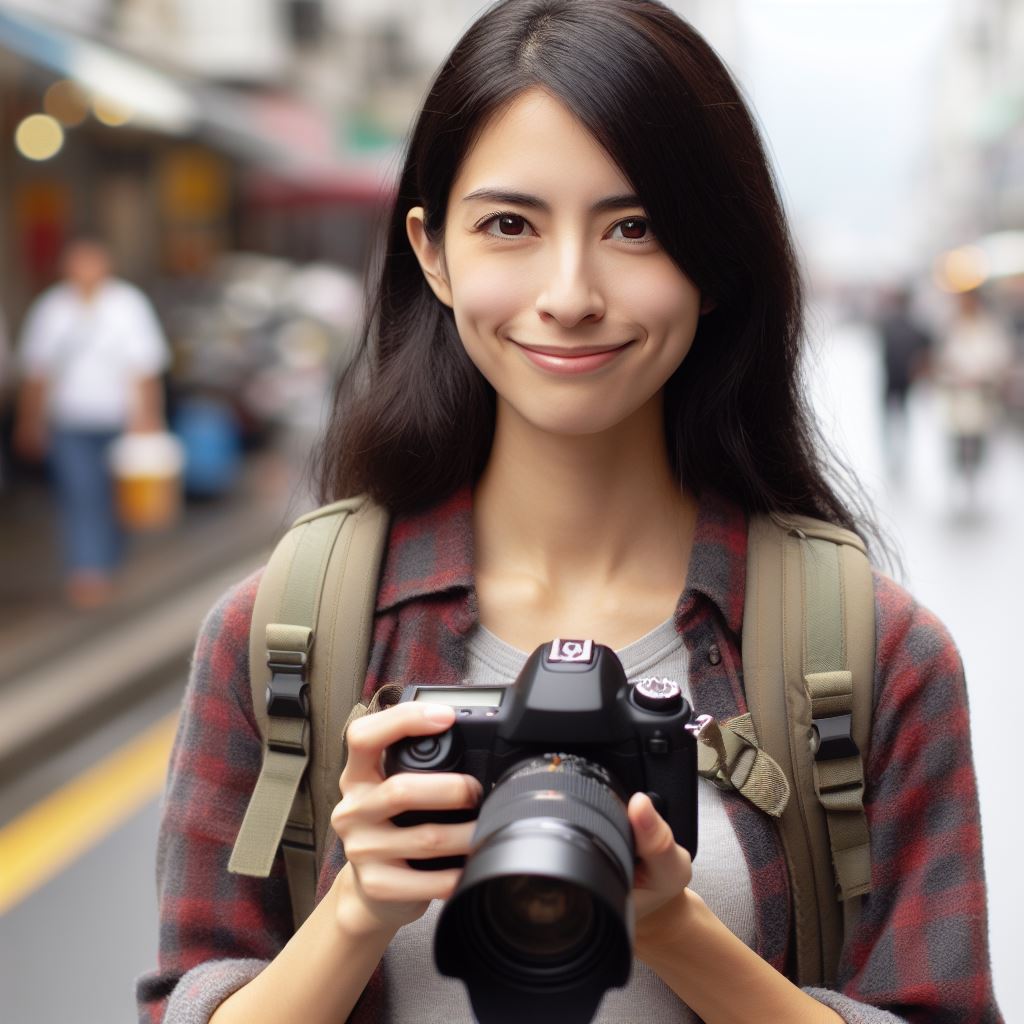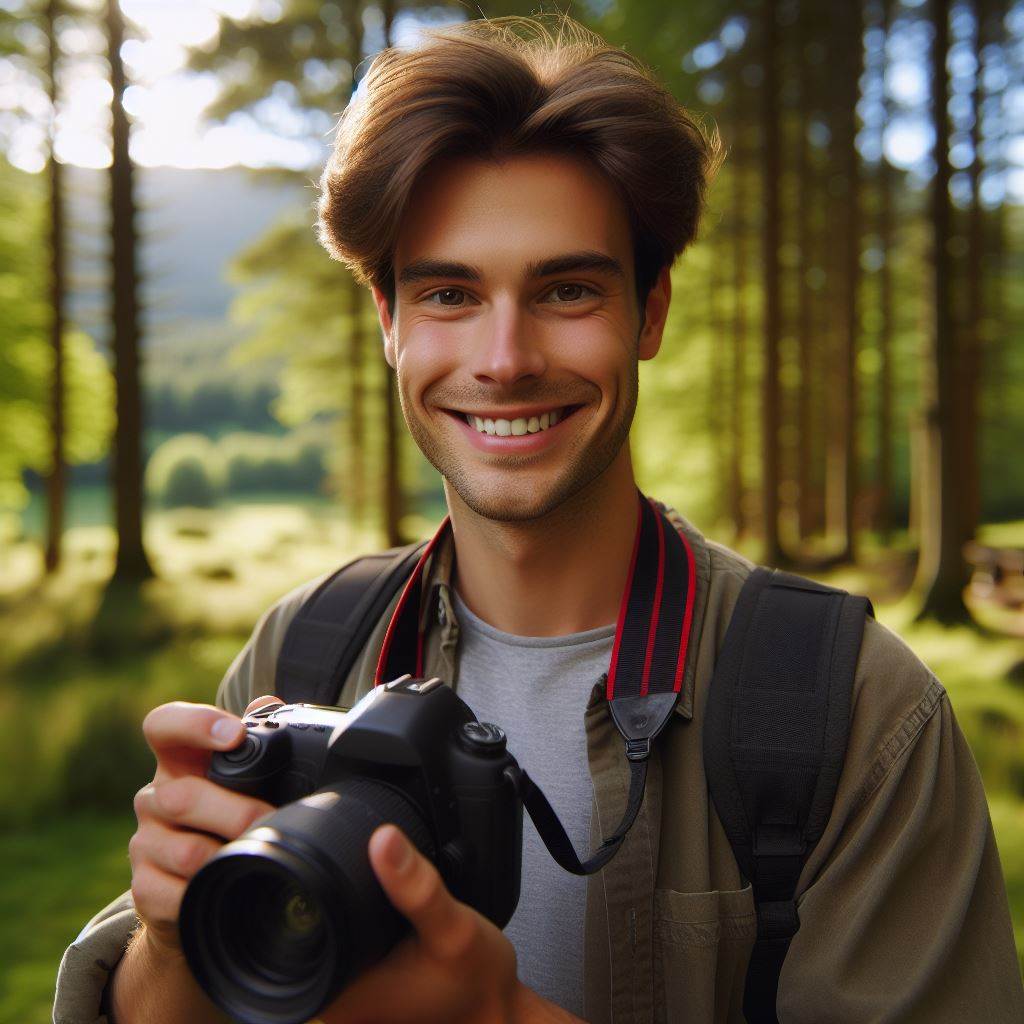Introduction
Photographers serve as visual storytellers, capturing fleeting moments and immortalizing them in images that evoke emotion and preserve memories.
In New Zealand, the art of photography is deeply ingrained in the culture, celebrated for its stunning landscapes, diverse wildlife, and rich cultural heritage.
From the rugged peaks of the Southern Alps to the pristine beaches of the North Island, New Zealand offers endless opportunities for photographers to explore and create.
The country’s unique blend of Maori traditions, European influences, and modern innovations provides a rich tapestry of subjects to photograph, from traditional ceremonies and festivals to contemporary urban scenes.
Additionally, New Zealand’s commitment to conservation and environmental stewardship has led to the protection of its natural wonders, ensuring that future generations can continue to marvel at its beauty through the lens.
As a result, photography has become not only a popular hobby but also a thriving industry in New Zealand, with professional photographers capturing the essence of the country for magazines, advertisements, and art galleries around the world.
Whether you’re a seasoned professional or an amateur enthusiast, New Zealand offers endless inspiration for photographers of all skill levels, inviting them to explore its diverse landscapes and vibrant culture through the art of photography.
Morning Routine
A day in the life of a NZ photographer starts with an early wake-up call to catch the best lighting.
Waking up early to catch the best lighting
- The alarm goes off, and the photographer reluctantly gets out of bed.
- With half-closed eyes, they stumble their way to the kitchen for a strong cup of coffee.
- As the caffeine starts to kick in, their excitement for the day ahead grows.
- They quickly check the weather forecast to ensure ideal shooting conditions.
Preparing equipment and double-checking settings
- With a fully charged battery and empty memory card, they start packing their gear.
- Each lens and camera body is carefully cleaned and inspected for any dust or scratches.
- All the necessary accessories, including tripods and filters, are put into the camera bag.
- The photographer double-checks all the settings on their camera to avoid any technical mishaps.
Traveling to the location of the shoot
- The photographer loads their car with all the equipment and sets off towards the location.
- They enjoy the drive, taking in the scenic views and mentally preparing for the shoot.
- Along the way, they listen to their favorite playlist, creating the perfect mood.
- As they reach the destination, they park the car and unload everything with caution.
Finally arriving at the destination, the photographer unloads their equipment with great caution.
Each piece of gear is handled delicately, as they know even the smallest scratch can affect the outcome of their work.
With the morning routine complete, the photographer is now ready to capture the beauty that awaits them.
Read: Film vs Digital: NZ Photographers’ Perspectives
On-location Photoshoot
Capturing stunning landscapes or professional portraits
As a photographer in New Zealand, one of the most exciting parts of my job is going on location for photoshoots.
Whether I’m capturing the breathtaking landscapes or taking professional portraits, every shoot is a unique experience.
Dealing with different weather conditions
One of the challenges of shooting on location is dealing with unpredictable weather conditions.
Personalized Career Consulting
Unlock your potential with expert career advice tailored to your goals. Get personalized guidance and actionable steps toward your dream career in New Zealand.
Get StartedIn New Zealand, the weather can change in an instant, so I always have to be prepared.
From rain and wind to intense sun, I have to adapt and make the best of the situation.
Utilizing various techniques and equipment
Being a photographer means being proficient in using various techniques and equipment.
On-location shoots require me to be flexible and adapt to different lighting conditions.
I use a wide range of lenses, filters, and other accessories to achieve the desired results.
Interacting with clients and ensuring their satisfaction
Interacting with clients is a crucial aspect of my work.
Before the shoot, I discuss their expectations and vision for the photos.
During the shoot, I make sure they feel comfortable and guide them to pose naturally. Their satisfaction is my top priority.
Post-processing Work
Post-processing work is crucial for a photographer as it allows them to truly bring their vision to life.
It is during this stage that the photographs transform from raw captures to stunning works of art.
Transferring the images to a computer or laptop
As the photographer transfers the images to their computer, they can’t help but feel excited to see how the shots have turned out.
The anticipation builds as each image appears on the screen, ready to be brought to life through the editing process.
Sorting and selecting the best shots from the shoot
The sorting and selecting process can sometimes be challenging.
It requires a keen eye and a critical judgment to determine which shots truly capture the essence of the subject and meet the requirements of the shoot.
Transform Your Career with a Professional CV and Cover Letter
Stand out to employers with an ATS-optimized resume and tailored cover letter designed to match your dream role. Let us craft your job application materials for success!
Get StartedThe goal is to choose the best images that tell a story or evoke emotions.
Editing the chosen photographs
Once the selection is made, the editing process begins.
Enhancing colors and adjusting lighting can significantly transform the mood and impact of a photograph.
A dull and flat image can become vibrant and engaging with the right editing techniques.
Retouching imperfections is another important aspect of the editing process.
It involves removing any distractions or blemishes that may take away from the overall quality of the photograph.
Small details can make a big difference.
Creating a cohesive story or a specific mood through editing
However, editing is not only about fixing and adjusting.
It is also an opportunity for the photographer to express their creativity and vision.
They can experiment with different styles, filters, and tones to create a specific mood or tell a story more effectively.
As the photographer continues editing, they start to see their vision coming to life.
The images begin to form a cohesive story or convey a particular mood, just as they had imagined during the shoot. It is a gratifying process.
Finally, after hours of post-processing work, the photographer sits back and views the final edited photographs.
They are proud of the results and can’t wait to share their work with the world.
Boost Your Career with a Standout LinkedIn Profile
Attract recruiters and expand your network with a fully optimized LinkedIn profile tailored to highlight your strengths and professional goals. Let your profile open doors to new opportunities!
Get OptimizedPost-processing is an essential part of a photographer’s workflow.
It is the stage where their creativity shines as they transform raw photographs into art pieces that capture the beauty and essence of the subjects they shoot.
Read: Wedding Photography Trends in New Zealand
Marketing and Networking
Marketing and networking play a vital role in the success of any photographer.
It’s not enough to capture beautiful images; you also need to promote yourself and connect with the right people to grow your business.
In this section, we will explore various strategies that I employ to effectively market my photography services and expand my professional network.
Showcasing work through a portfolio or website
One of the most important marketing tools for any photographer is a well-curated portfolio or website.
It serves as a visual representation of my work and helps potential clients gauge my style and capabilities.
I ensure that my portfolio showcases a diverse range of my best photographs and is regularly updated with new projects and fresh content.
Creating a visually appealing and user-friendly website is essential.
I focus on design elements that highlight my photography, incorporating clean and intuitive navigation, high-quality images, and easy-to-read text.
I also include a detailed about me page, where I share my background, experience, and artistic vision.
Utilizing social media platforms to promote photography services
To reach a wider audience and gain exposure, I utilize social media platforms to promote my photography services.
Instagram, in particular, provides a visually-driven platform that allows me to showcase my work effectively.
I regularly post high-quality images accompanied by engaging captions and relevant hashtags.
I also engage with my audience by responding to comments and messages, providing a more personalized experience.
Additionally, I use Facebook to share updates, behind-the-scenes content, and industry-related news.
These platforms allow me to expand my reach and connect with potential clients and fellow photographers.
Attending photography events and gatherings to connect with other professionals
Networking is vital in the photography industry, as it opens doors to new opportunities and collaborations.
I make it a point to attend photography events, workshops, and gatherings where I can meet and connect with other professionals.
These events not only provide a platform to showcase my work but also offer opportunities to learn from industry leaders and gain insights into the latest photography trends.
By mingling with fellow photographers, I expand my network, exchange ideas, and potentially collaborate on future projects.
Collaborating with models, stylists, and other creative individuals
Collaboration is a driving force behind innovative and captivating photography.
By partnering with models, stylists, makeup artists, and other creative individuals, I can create visually stunning images that stand out.
Working with models allows me to experiment with various concepts and bring my artistic vision to life.
By collaborating with stylists and makeup artists, I enhance the overall aesthetic of my photographs.
These collaborations not only produce striking visuals but also foster professional relationships, leading to more opportunities for future projects.
In general, marketing and networking are essential components of a successful photography business.
Through a well-curated portfolio, strategic use of social media, attending photography events, and collaborating with other creative individuals, I continue to expand my reach, build a strong network, and attract clients who appreciate and value my work.
Read: Maori Culture Through the Lens of NZ Photography

Continuous Learning and Creative Growth
Staying updated with the latest photography trends and techniques
- As a photographer, it is crucial to stay abreast of the ever-evolving world of photography.
- Regularly reading photography blogs, magazines, and following industry experts can provide valuable insights.
- Exploring online tutorials and courses can help to learn new techniques and stay ahead of the game.
- Networking with other photographers through social media platforms can be a great way to exchange ideas and stay informed.
- Attending photography conferences and exhibitions can also offer opportunities to learn about emerging trends.
Experimenting with new approaches and styles
- To avoid stagnation, it is essential for a photographer to experiment with different approaches and styles.
- Trying out unconventional angles, unique lighting techniques, or experimenting with post-processing can lead to fresh perspectives.
- Stepping out of one’s comfort zone and pushing boundaries can ensure continued growth and creative development.
- Being open-minded and receptive to new ideas and concepts can spark innovation and bring renewed excitement to one’s work.
- Embracing change and embracing new challenges can help in refining one’s personal style.
Participating in workshops or joining photography clubs
- Joining workshops or photography clubs can provide opportunities to learn from experienced professionals.
- Workshops offer hands-on experience and expert guidance to enhance technical skills and artistic vision.
- Being part of a photography club can foster friendships and create a supportive community for sharing knowledge and experiences.
- Collaborating with other photographers can inspire and motivate personal growth through collective creativity.
- Engaging in group projects or exhibitions organized by these clubs can provide exposure and recognition.
Seeking feedback and critiques for personal improvement
- Constructive criticism is essential for personal growth and improvement as a photographer.
- Seeking feedback from peers, mentors, or participating in critique sessions can help identify areas to focus on.
- Actively listening to feedback and being open to suggestions can help in overcoming weaknesses and refining skills.
- Participating in photography competitions can provide valuable feedback from judges and validate one’s progress.
- Regularly self-assessing and critiquing one’s own work can lead to self-improvement and continuous development.
Continuous learning and creative growth should be a priority for any photographer looking to excel in their craft.
By staying updated with the latest trends, experimenting with new approaches, participating in workshops or clubs, and seeking feedback, one can ensure their work remains fresh, innovative, and constantly evolving.
Read: Landscape Photography: Capturing NZ’s Beauty
Challenges Faced
Dealing with unpredictable lighting conditions
As a photographer in New Zealand, one of the biggest challenges I face is dealing with unpredictable lighting conditions.
The weather in this country can change rapidly, making it difficult to plan and execute a photo shoot.
One moment the sky is clear, and the next it’s cloudy or raining.
This constant change in lighting requires me to be flexible and adapt quickly to ensure I capture the best possible shots.
Managing time constraints and tight schedules
Another challenge I often encounter is managing time constraints and tight schedules.
Clients have specific time requirements for their photo shoots, and it’s my responsibility to ensure everything runs smoothly.
This includes coordinating with models, makeup artists, and other team members, as well as finding suitable locations within the given timeframe.
Time management is crucial to deliver high-quality results while respecting the client’s schedule.
Balancing creativity and meeting clients’ expectations
One of the essential aspects of being a photographer is finding the balance between creativity and meeting clients’ expectations.
While clients come to me for my artistic vision, they also have their own ideas and requirements.
It’s my job to understand their vision and incorporate it into my work while still expressing my creativity.
This delicate balance can sometimes be challenging, but it ultimately leads to a collaborative and satisfying outcome for both parties.
Handling the physical demands of carrying heavy equipment
Carrying heavy equipment is a physical demand that photographers frequently face.
From cameras and lenses to tripods and lighting equipment, my gear can become quite cumbersome.
It requires strength and endurance to carry and maneuver these tools, especially during outdoor shoots that involve hiking or navigating uneven terrain.
To overcome this challenge, I prioritize my fitness and use proper equipment carrying techniques to minimize strain on my body.
In review, being a photographer in New Zealand comes with its fair share of challenges.
Dealing with unpredictable lighting conditions, managing time constraints, balancing creativity and meeting clients’ expectations, and handling the physical demands of heavy equipment are all aspects that require careful consideration and adaptation.
However, overcoming these challenges is part of what makes the profession fulfilling and allows me to capture the beauty of this incredible country through my lens.
Rewards and Fulfillment
A Day in the Life of a NZ Photographer is not just filled with challenges, but it also offers numerous rewards and fulfillment.
These come in different forms, each contributing to the overall satisfaction of being a photographer in this beautiful country.
Capturing the Beauty of New Zealand’s Landscapes and People
The landscapes in New Zealand are breathtaking, and as a photographer, it is an incredible reward to be able to capture their beauty through the lens.
From snow-capped mountains to pristine lakes, rugged coastlines to lush green forests, every photo taken tells a story of the natural wonders of this land.
Photographing the diverse people of New Zealand, with their unique cultures and traditions, adds an extra layer of richness to the art.
Bringing Joy to Clients through Stunning Visual Memories
One of the most rewarding aspects of being a photographer is the ability to bring joy to clients by capturing their special moments in stunning visual memories.
Whether it’s a wedding, a family portrait, or a milestone event, the photographs serve as timeless keepsakes that can be cherished for a lifetime.
Knowing that the images you captured will be cherished by your clients and their loved ones is incredibly fulfilling.
Achieving Personal Satisfaction in Creating Art through Photography
Photography is not just about capturing moments, but also about creating art.
Being able to express oneself creatively through composition, lighting, and storytelling is deeply satisfying.
The process of turning ordinary scenes into extraordinary works of art is a constant source of personal achievement.
Building a Successful Career Doing Something One Loves
Perhaps the greatest reward of all is being able to build a successful career doing something you are passionate about.
Many people spend their lives longing for a job they love, but as a photographer, you have the opportunity to turn your passion into a fulfilling career.
Being able to wake up each day excited about what you do and knowing that you are making a difference in people’s lives is incredibly rewarding.
In a nutshell, a day in the life of a NZ photographer is not solely about navigating the challenges of the profession.
It is also about reaping the rewards and finding fulfillment in various aspects.
From capturing the beauty of New Zealand’s landscapes and people to bringing joy to clients and achieving personal satisfaction in creating art, being a photographer is truly gratifying.
Moreover, the ability to build a successful career pursuing one’s passion adds an extra layer of reward and fulfillment to this incredible journey.
Conclusion
From early morning shoots to late night editing, a photographer’s day is full of excitement and challenges.
They capture priceless moments, explore new perspectives, and deliver stunning visuals.
Photography is more than just clicking a button; it requires a burning passion for capturing beauty, an endless well of creativity, and a relentless dedication to honing one’s craft. It’s not just a job; it’s a way of life.
For those who dream of becoming photographers, take that leap of faith.
Embrace the challenges, learn from every shoot, and let your creative spirit soar. The journey won’t be easy, but the rewards are priceless.
Photography has the power to transport us to another world, to evoke emotions, and to capture fleeting moments in time.
As a NZ photographer, you have the opportunity to weave together the fabric of memories, to tell stories that last a lifetime.
So, young photographers, heed the call of your passion. Let your creativity flow and seize every opportunity to expand your skills.
Embrace the challenges and never stop learning. Your unique vision can shape the world through your lens.
Being a NZ photographer is a truly fulfilling and inspiring profession.
It requires dedication, passion, and creativity, but the rewards are immeasurable.
So, go out there and capture the moments that define our world, and let your art leave an indelible mark.
Dare to dream and make your vision come to life.




